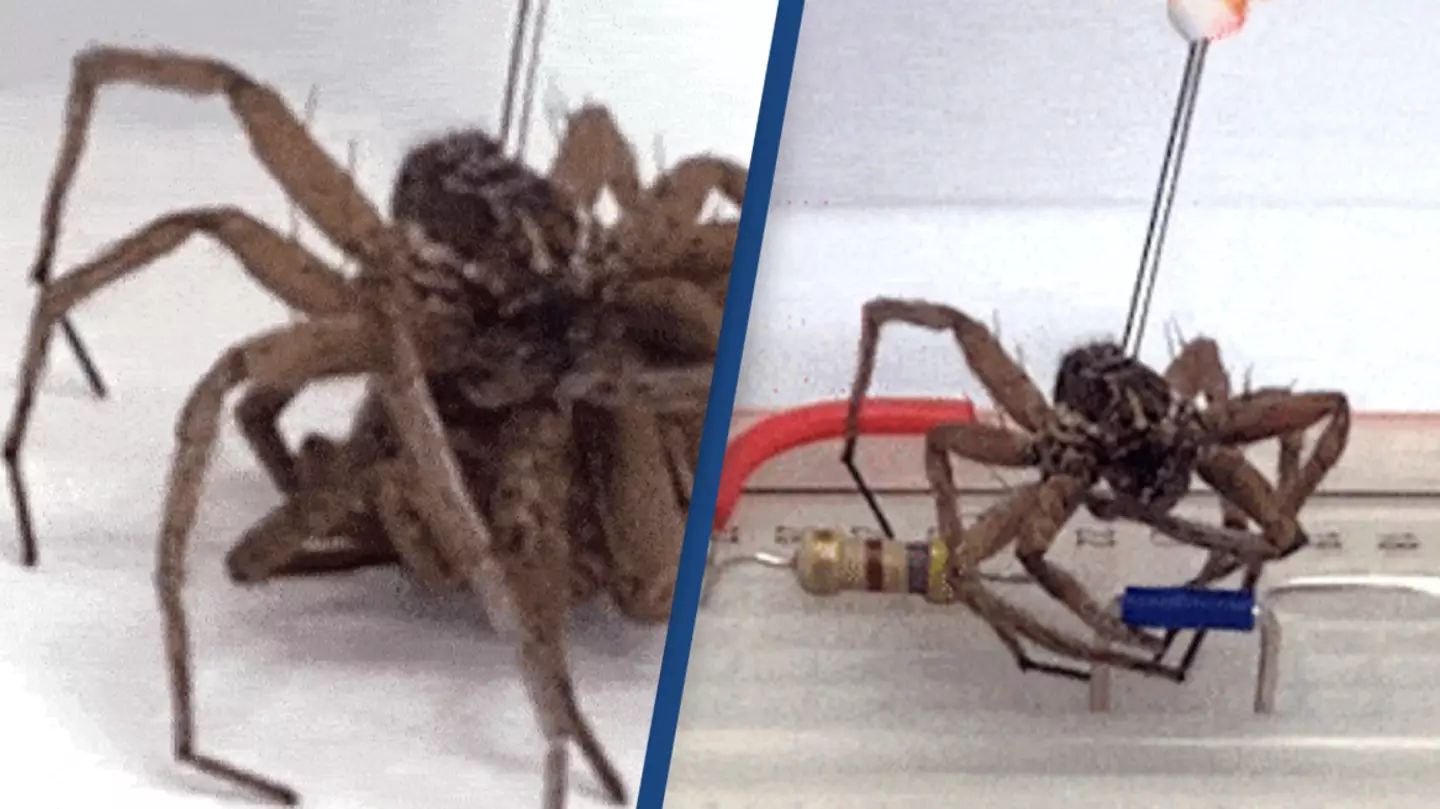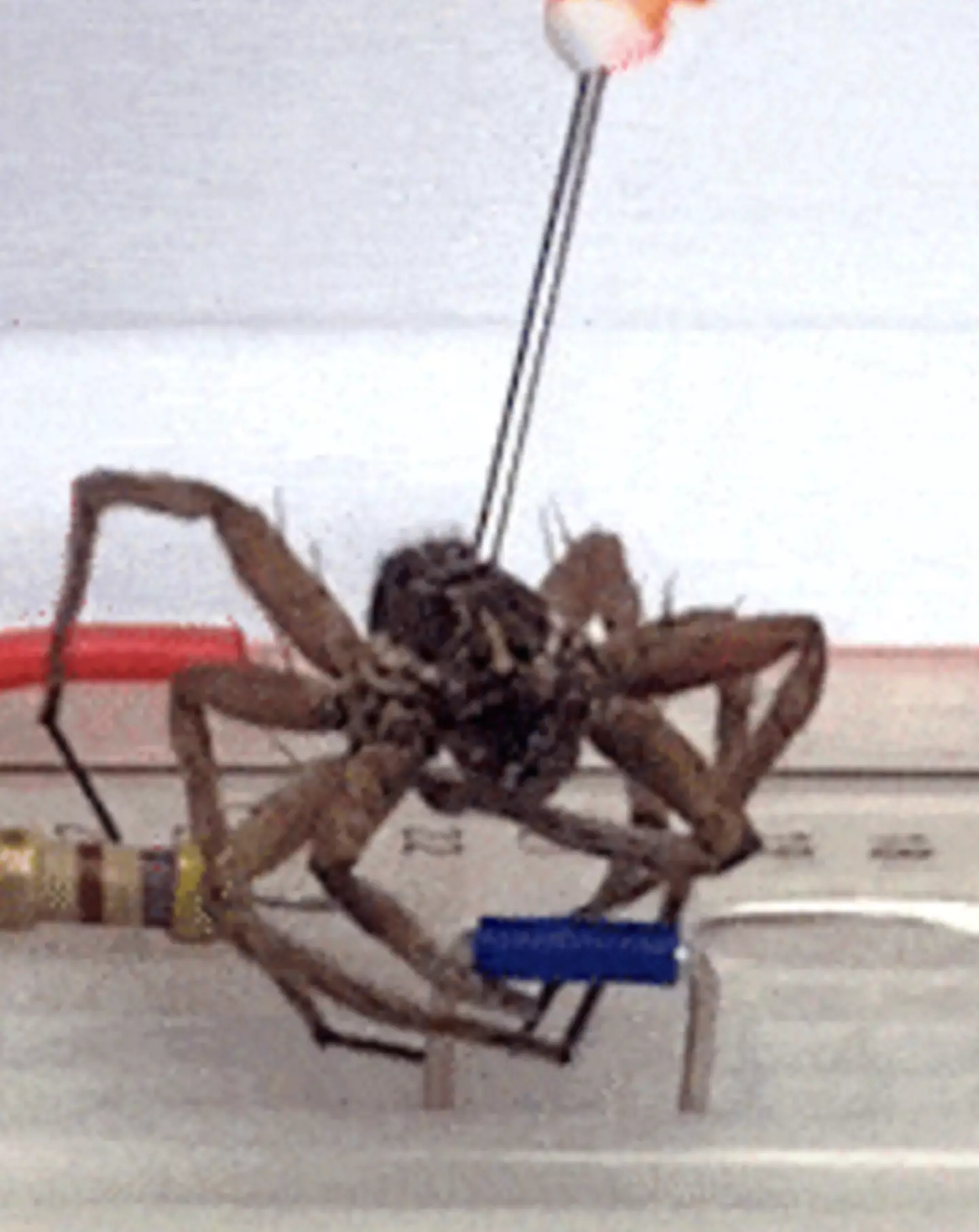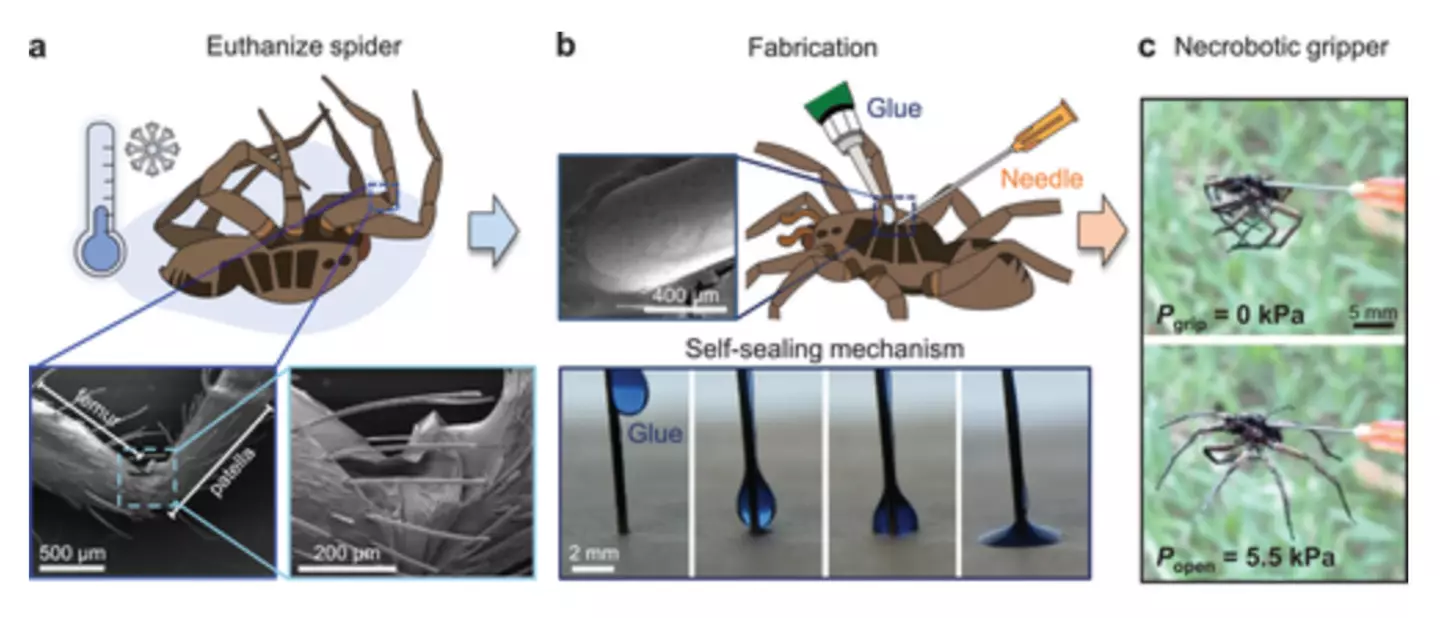
Scientists have been turning dead spiders into robots, and it's as horrifying as it sounds.
In what sounds like the setup for a horror film, graduate student Faye Yap, in partnership with fellow engineer Daniel Preston has discovered a way to make use of dead spiders' legs.
Now, your first question is probably why? But it turns out it's not to scare people (that was our guess) and the reason behind it is actually really cool.
So, spiders can grip small, delicate objects with their legs without breaking them, which has loads of practical applications, like fixing small faults in microelectronic devices.
Advert

The way that the spider's legs work is so complex that it's near impossible to replicate using man-made models, so the new endeavour uses the existing system of a spider, with a few mechanical tweaks to get the best of both worlds.
Though we can't imagine the robots on an episode of Hannah Montana.
This type of robotics is called necrobotics and enhances the spider's natural mechanisms.
Advert
If you've ever wondered how a spider can grip onto heavy materials with such small legs, it's because "a spider extends each leg by actively contracting muscles in the prosoma (cephalothorax) to increase its internal hydraulic pressure."

The robotics system utilises this existing mechanism, which results in one of the most delicate robots we've ever seen.
Plus, it's a massive step forward, as the scientists said in their paper on the exciting endeavour: "The concept of necrobotics proposed in this work takes advantage of unique designs created by nature that can be complicated or even impossible to replicate artificially."
Advert
Plus, there are loads of dead spiders around and they're biodegradable so, unfortunately for those scared of spiders, this could well be the future.
Pretty cool right? Well, that's not all - it turns out it's actually fairly easy to make a robotic spider once you've got the electrical systems down, as the research team went on to say: "The fabrication of a necrobotic gripper requires only one simple step: inserting a needle into the prosoma region of a deceased spider and fixing the needle to the spider's body with glue to form a hermetic seal."

They went on to add: "The entire process, from inserting the needle to the setting of the glue to create a fully operational gripper, can be performed in approximately ten minutes."
Advert
Yep, about the same time, it takes us to make breakfast, and we're not sure if that's impressive or terrifying.
If you have a story you want to tell, send it to UNILAD via [email protected]